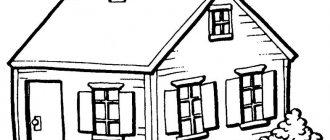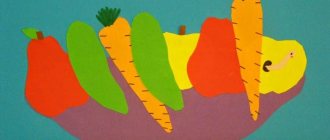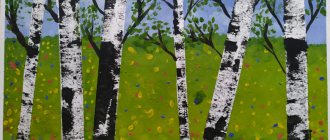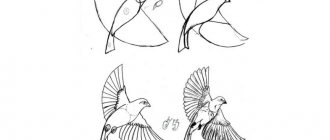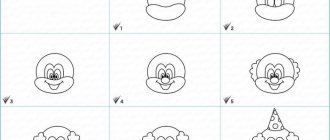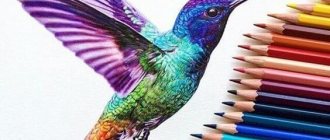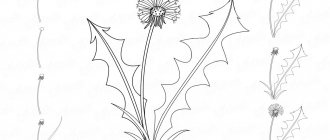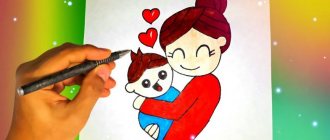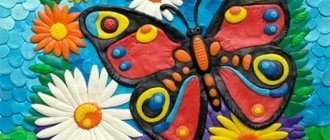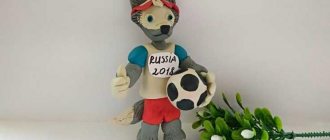Representatives of the bird world are found in nature in an amazing variety, they symbolize the sky, freedom, life and abundance. Sketches of birds often appear in children's albums.
Drawing birds is not only exciting, but also educational, because children get acquainted with forest, domestic and exotic species.
Parents should tell their child about their value to the natural environment, their anatomical structure and differences, sometimes even watching the winged singers from the window and feeding them in the winter.
How to draw a bird
The process of drawing birds will be greatly simplified if you follow the recommendations and practice regularly, improving your hand. Master classes will be useful for children of all ages, helping them cope with the difficult task of mastering artistic skills.
Owl
Let's try to recreate this expressive image step by step:
- Work begins with two circles with cross-shaped lines at the smaller top figure.
- We outline them with smooth lines, continuing the back part, ending with the tail.
- We finish drawing the legs with three toes.
- We depict round eyes with eyebrows and characteristic ears.
- Below we place a beak that looks like a hook.
Now we need to display the plumage, which lies in rows on the wing, tail, and the fluff on the chest, conveyed by shading. The pencil drawing of the bird is ready.
Penguin
Not a flying, but a floating specimen, recognizable from cartoons and movies, also belongs to the family of birds; its appearance is not difficult to reproduce in profile. You will need to outline a vertical egg ending in a small head with a beak. Draw a short tail and legs.
The most important thing is to correctly paint the picture with paints or felt-tip pens - the head area, the back with wings-flippers are black, and the abdomen is white.
Chick
The proposed version of the image of a chick is simple. We draw an arc from bottom to top, ending with an arrow-nose. We draw the eyeball with the pupil side by side. From the arrow we continue the bow to the starting point, ending it with a tail. We draw on the arched wing and thin legs.
Parrot
Many people keep these bright individuals at home; let’s draw a striking bird step by step:
- We sketch out a diagram of 2 ovals, on the left we draw a back line that turns into a falling tail.
- We use a semi-rounded ruler to mark the bottom of the wing.
- Draw the beak-hook, eyes-circles and paws.
We proceed to contrasting coloring, conveying the feeling of feathers. We use red, blue, yellow. Using a black tone we highlight the base of the beak and the edges of the feathers.
If you want to capture a parrot in flight, use a pair of arched rulers to show outstretched wings with an arched lower edge; its face will be half turned towards us, complemented by a beady eye and a hump nose.
Woodpecker
The cautious and beautiful little bird, by knocking on a tree trunk, not only gets food for itself, but also lets other “relatives” know about the boundaries of its territory, attracting females in the spring. Procedure:
- We draw an oval head and a body with extending wings.
- We draw the line of the beak, legs and move on to the hanging tail.
- We detail the wing by tracing the contours and highlighting the feather strokes.
- We remove unnecessary lines and refine the eye.
Decoration will add realism - a red head, a white chest. We emphasize the beak and other body fragments with black coloring.
Stork
This handsome guy has long legs, an ovoid body and a small head with an elongated yellow nose. Having completed the sketch, we clarify the details. Using a series of rulers we draw out the raised wings.
The ankle-shaped, yellowish limbs have a thickening in the middle. The aerial inhabitant has a snow-white color with a gray-blue tint at the tips of the plumage. Using strokes we emphasize the fluff in the chest area.
If you take on a heron, then give its neck a greater bend, and draw a crest on the back of its head, let it keep its balance on one limb, tucking the other, as it is more accustomed to do when hunting for river life.
Bullfinch
Let's depict a small bird with a colorful appearance that does not fly away to hot countries for the winter:
- Draw an oval body and a circle head.
- From them we draw a line that turns into a wing.
- We fix the neck and tail segment.
- The paws will tenaciously hold on to the branch.
We paint the figure - a bright red breast, a white spot under the eye, reminiscent of a bead with a dot, highlighted darkened plumage.
flying seagull
At first, the task seems difficult, however, even a child can do it:
- A round head and an elongated body with a lower convexity are outlined.
- The near wing has a more elongated format compared to the far element.
- The continuation of the figure will be the tail.
- The bird's legs are folded and pressed.
- We display zigzag feathers more accurately.
Hatching shows the fall of the shadow. It is worth noting that the dimensions of the wings of flyers increase in direct proportion to the size of the body.
Lifestyle
When studying the bird fauna of any area, one can note the variability of its composition at different times of the year. In fact, very few birds live with us both winter and summer. This is largely due to seasonal changes in the lives of birds. In this regard, according to their lifestyle, all birds can be divided into three groups: sedentary, nomadic and migratory.
After winter comes a revival in nature. With the arrival of spring, significant changes occur in the lives of birds. Migratory birds return from wintering grounds.
For life, birds choose areas with favorable conditions, organizing nesting in the same place year after year. Here the male begins to sing, luring the female, and notifying others that the place is occupied. Birds, when choosing their life partners, attach great importance to the color of their plumage. Therefore, males have brighter colors to attract females.
Many people choose a pair for one season. However, birds are known in which pairs form for a long period or for life. For example, storks, herons, swans and birds of prey.
After the pair is formed, a crucial period begins. In the life of birds, spring is the time for breeding, and then caring for the offspring. To do this, they begin nest-building, laying eggs and raising chicks.
Caring for offspring: a penguin protects a chick from a petrel
In wildlife you can observe very interesting moments from the life of birds. For example, bird markets are of great interest. A striking example of such social life is the mass nesting of birds in the north. Birds live in a colony and work together to protect their young from predators. Such collective life makes it possible to preserve offspring, protect themselves from predators, and thereby increase the life expectancy of birds.
Bird market in Kamchatka
After spring and summer come the first cold days. The life of animals and birds in the fall is aimed at preparing for the winter cold. Birds that cannot find food in the cold fly away to warm countries. It is generally believed that birds fly south. Bird ringing has shown that many of them fly to the west and southwest. The autumn flight of birds is extended over time. It lasts about three months.
The first snowfall in autumn causes anxiety among birds. The first changes in the way of life of birds are taking place. Sedentary birds switch to coarse, low-nutrient woody food - buds, shoots and needles. Many birds migrate for the winter closer to populated areas. Nomadic birds begin to appear.
Nomadic birds - waxwings
It is difficult for all living things in this harsh season of the year. The cold hinders the movements of birds. Lack of food and death of forest inhabitants are often observed. It is within our power to take care of our feathered friends and organize feeding. It’s not difficult to make a simple feeder and hang it out the window in the yard, garden or park. We will save many birds from hunger and help them survive until the first warm days of spring.
Sparrows and tits at the feeder
Birds will not remain in debt, because they bring great benefits to humans. The positive significance of birds in human life lies in the destruction of insects and rodents - agricultural pests. Such useful birds include all insectivores, such as tits, nuthatches and others. It is impossible not to say about woodpeckers, which eat harmful insects: bark beetles, click beetles, golden beetles, etc.
White-backed Woodpecker
Owls and owls are considered energetic hunters of mouse-like rodents. Birds of prey also destroy mice: buzzard, kestrel, harrier, etc.
Gray owl with prey
Birds are of great economic and commercial importance. Some birds provide tasty meat (hazel grouse, black grouse, wood grouse, ducks, etc.), while other birds provide valuable feathers (eiders, loons, geese).
Representatives of the chicken and anseriformes orders are domesticated. Poultry farming is a large livestock industry that supplies food.
Poultry meat is very nutritious and tasty. Chicken eggs are a valuable food product.
Chickens at a poultry farm
The importance of birds in nature is also very significant. Birds, as already mentioned, regulate the number of living organisms. Sometimes birds themselves serve as food for other animals, being a link in the food chain.
Without these animals, the seeds of many plants would not be distributed over significant distances. Pecking at various berries, they throw out intact seeds with droppings, often far from the place where they grew.
Small breeds
Sparrows are the most common family; their oval body is equipped with a round head and a triangle-beak. Draw the wing, eye and thin legs. An interesting titmouse with a round yellow belly.
The smallest bird is the hummingbird, which is distinguished by its long nose, thickened at the base, with which it drinks nectar from flower buds; it has also earned fame for its ability to fly backwards. The picture will turn out believable if you carefully work out the feathers of the birds.
Sketching
Sketches are essential for beginning artists. Just a few strokes allow you to determine the movement and outline of the bird. There is no need to be afraid of imperfect sketches, because their purpose is to prepare the ground for further detailed elaboration.
Each person who undertakes to draw birds must use different possibilities. The first step is to study the drawn pictures of birds. They help to understand the structure of the feather, to anticipate how light and shadow are distributed.
Crow
Flocks of crows have chosen places close to humans; these birds are smart and intelligent. We offer a way to draw this bird easily and simply:
- On one diagonal we draw contour sketches of the head and torso, thickened towards the bottom and a triangular tail.
- We connect these parts with a stroke, completing the beak and two paws with claws.
- We detail the wing and give the tail a flat appearance.
- Having removed the basting, we move on to the plumage.
- Inside the eye we designate a highlight; an additional curve goes from it to the beak.
You can start shading with a black pencil, emphasizing the feather coating with contrast. If you choose the image of a magpie, then remember its peculiar black and white coloring and long tail.
Bird body structure
Beginning artists will understand how easy it is to draw a bird if they better learn the techniques and basic rules.
- — All birds have a streamlined shape. This shape is necessary for flight.
- — The skeletal structure of birds is the same. Only the length and size of the individual parts change.
- “The feathers overlap each other like tiles on a roof.” The overlap begins along the front of the crown, then goes down the back to the tail.
- — The structure of the wing corresponds to the structure of the human upper limb, i.e. shoulder, forearm and wrist. The “brush” is the place where the first flight feathers begin to grow.
- — Birds’ knees are almost invisible. It is often covered with feathers.
- — Bird paws are arranged as follows: three fingers point forward and one back.
Unusual specimens
There are varieties that cannot be confused with anyone else. For example, this is an overweight pelican, with a beak-bag where it stores fish, or a toucan with a special structure of a voluminous nose-beak.
Pink flamingos on elongated legs are graceful and spectacular, and the nimble swallow is distinguished by its forked tail and erected hut nests.
The highlight of the peacock is a chic blossoming fan-tail with diamond-shaped colored patterns, and its head is crowned with a “crown” of corollas with circles.
Let's depict a formidable eagle:
- We make a general sketch of the body with all its fragments.
- We start detailing from the head with a slightly open beak-hook and an eye with a pupil under the eyebrow.
- We approach the back, lowering ourselves onto the tail section.
- The sitter has sharp claws on his large paws, and specific “pants” on his shins.
- We convey the plumage on the powerful wings by shading.
We draw the stump on which the predator is sitting.
Graceful swans are impressive, associated with fidelity and love. The simplest version begins by drawing the number two flowing into the body rocking on the waves. These birds have a characteristic marking on their wide beak and webbed feet.
Flamingo from bottles
To make this product you need large plastic bottles (5 and 10 liters), a polymer pipe about two meters long, a corrugated pipe about sixty centimeters long, acrylic, wire, foam.
The base body is made from the largest bottle. In its bottom you need to cut 2 holes according to the diameter of the polymer tubes (future legs). Feathers are cut from smaller five-liter bottles and attached to slits in the body.
A neck is made from a corrugated pipe, which is inserted into the neck of a ten-liter bottle. The head is cut out of foam plastic. Eyes are drawn with a felt-tip pen and a black plastic beak is attached. It is better to start attaching the feathers from the very bottom to the mesh.
Fairytale variations
The firebird from the fairy tale has sweeping fan-like wings and a flowing plume-tail, a non-trivial fiery coloring, performed at its own discretion.
It is filled with figural patterns of different colors, from which streaks radiate, comparable to hair. Next, you need to blacken the edges of the plumage and fix the head crest.
Also interesting is a character who has an unusual, bright appearance. This is a circle with a polygonal beak, on the sides of which there are huge eyes with the obligatory “bags” under them. There is a crest on the head and a miniature tail on the left. You can start coloring.
Paper plate craft
How to make such a bird craft? Disposable plates are taken. They are painted with the necessary paints and eyes are drawn on their surface, and a paper beak is also placed. The bird's wings and tail are best cut out of paper or made from real bird feathers.
You can also stretch a thread near the bird’s eyes, by which you can hang it, for example, on a chandelier, to then take wonderful photos of the bird’s crafts.
Dove of peace
When thinking about how to draw a bird for children, remember the dove - a fluttering creature with a flowering twig in its beak, which is a symbol of peaceful life.
Having outlined the oval body and the circle head, they are combined by adding a carved tail. The wings, open to the sides, can be compared in shape to an inverted trapezoid. The final stroke is to give the edges of the feathers fragmentation with zigzags.
Of course, it is impossible to cover all the inhabitants of heaven. Starting with one image and strengthening your skills, move on to the next example. Children will certainly enjoy this exciting pastime, which not only develops fine motor skills, but also expands their horizons and knowledge about the earth's fauna.
Auxiliary materials for work
Having chosen models for independent work, you should organize your workplace and provide high-quality lighting (natural and artificial light sources). You will also need the following set:
- Patterns in the shape of birds.
- Scissors.
- Threads, needles.
- Glue.
- Felt.
- Decorative elements (beads, rhinestones).
- Metal wire.
- Paper clips.
- Plywood sheet.
- Cardboard.
- Colored and corrugated paper.
Instructions for work and sketches of birds will be useful to the craftsman in the process of making crafts.
Veils
The skin of birds is practically devoid of sebaceous and port glands. All that remains is the coccygeal gland, the secretion of which lubricates the feathers to protect them from moisture and increase aerodynamics.
Horny derivatives of the skin are feathers; they cover the body of birds, protecting and ensuring flight. There are contour and down feathers, which differ in structure and function.
Digestive system
The high metabolism of birds is supported by a digestive system of a specific structure. Food captured by the beak travels through the esophagus into the crop, where it swells and begins to be digested.
The anterior section of the stomach is glandular, where the chemical breakdown of nutrients takes place; in the second section, the muscular section, mechanical grinding of food masses takes place. Afterwards come the duodenum and small and large intestine, which opens into the cloaca, along with the ducts of the excretory and reproductive systems.
Digestive enzymes are synthesized by the pancreas and liver.
Circulatory system
In representatives of the class of birds, a separation of arterial and venous circulations appears for the first time.
The heart has four chambers, so venous and arterial blood pass through it without mixing. The consequence of separation is intense gas exchange and constant body temperature, that is, warm-bloodedness.
Propulsion system
Birds' muscles allow them to perform complex movements with a high degree of coordination. The organs of movement of flying birds are wings.
The pectoral muscles are the most developed (up to 1/5 of the total body weight).
Birds that have lost the ability to fly have powerful leg muscles that allow them to run quickly on the ground.

